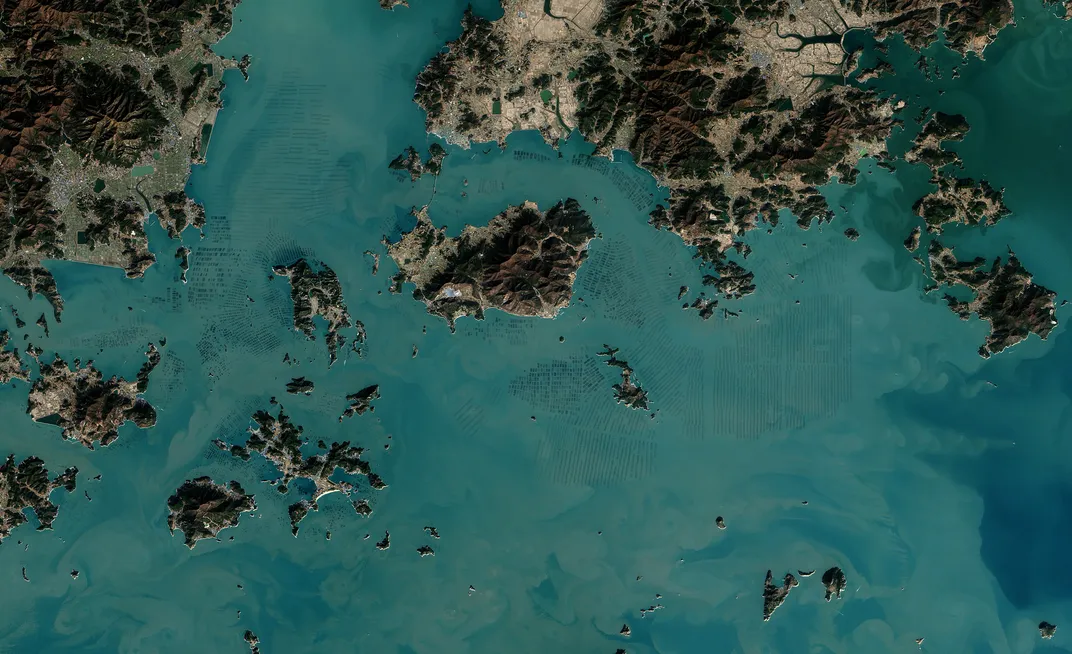You Can See South Korea’s Seaweed Farms From Space
Seaweed farms offer a sustainable source of vegetable protein
/https://tf-cmsv2-smithsonianmag-media.s3.amazonaws.com/filer/ba/4e/ba4e0695-f66c-4341-8b40-9ea38ba6f741/april2015puzzler.jpg)
There’s something strange happening off the coast of South Korea. Scattered across shallow waters between jagged-edged islands, squares and rectangles mark the turquoise water with artificial precision. These aren't alien markings though, they're seaweed farms spotted by NASA’s Goddard Space Flight Center.
Each angular patch is a field of seaweed held near the surface by buoys and ropes. NASA’s Earth Observatory posted an image as a puzzler for their readers to figure out. In the answer, Adam Voiland writes:
The Operational Land Imager (OLI) on Landsat 8 acquired this image of seaweed cultivation in the shallow waters around Sisan Island on January 31, 2014. Home to a thriving aquaculture industry, the south coast of South Korea produces about 90 percent of the country’s seaweed crop.
South Korea cultivates two types of seaweed, Voiland explains: Undaria, a type of kelp known as Wakame in Japan, and Pyropia, also called nori. Edible seaweed may not be hugely popular outside of traditional Korean, Chinese and Japanese food, but perhaps that trend should change. For The Atlantic, Brendan Smith writes:
Seaweed farms alone have the capacity to grow massive amounts of nutrient-rich food. Professor Ronald Osinga at Wageningen University in the Netherlands has calculated that a global network of "sea-vegetable" farms totaling 180,000 square kilometers — roughly the size of Washington state — could provide enough protein for the entire world population.
Seaweed can also offer material for food additives (it’s used to thicken ice cream) textiles and biofuel. Plus, seaweed farms may be more sustainably than land-based farms because they don’t need freshwater or fertilizer.
Due to these attractive qualities, seaweed cultivation is picking up around the globe. Craig Lemoult reports for NPR’s The Salt that a few American farmers and chefs are already tuned in to the wonders of seaweed. They just hope the public will catch on and realize that not only is seaweed good for you, it’s also delicious.
